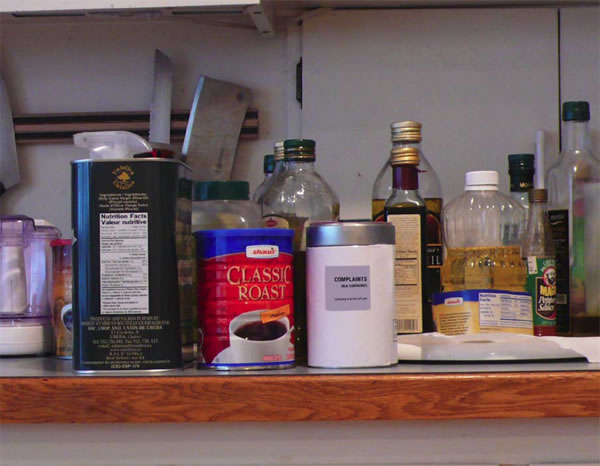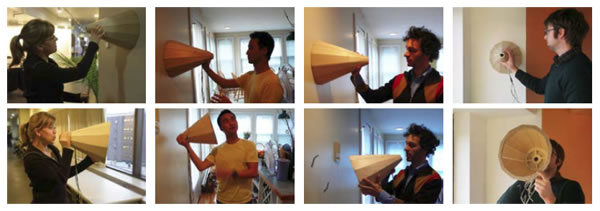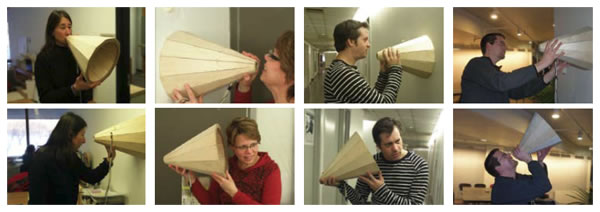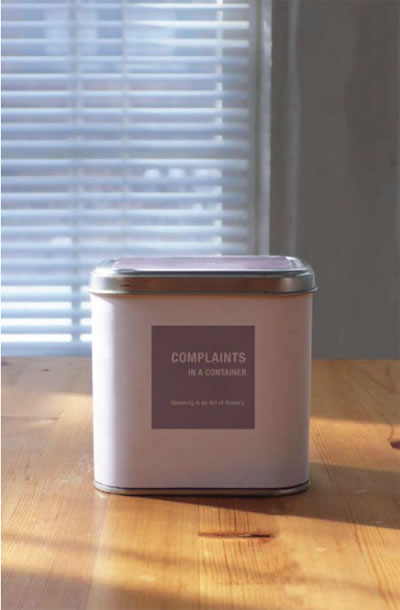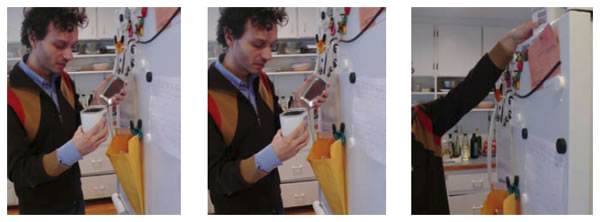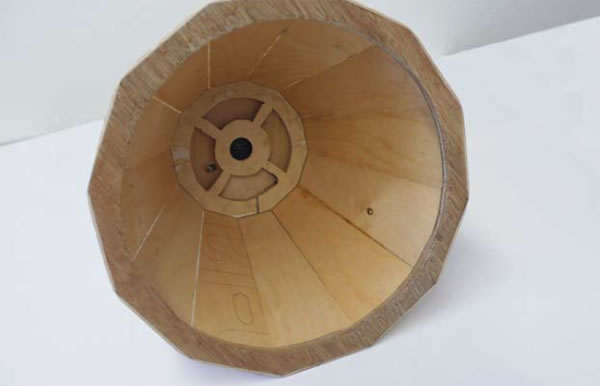Mingxi Li, MFA ’09
project
Abstract
Luckily, most human do not go through huge traumas of war or disaster, but we still deal with small traumas every day. Fearless Speaking: Complaints-in-a-Container is a project to help people to open up and communicate small displeasure in semi-public places and release their emotions without fear of being recognized.
Motivation
In October 2008, I spent two hours on Skype with my best high friend school Lynn. During our conversation, she told me that she was seriously depressed recently, because of moving to Germany, changing her major from art to math and breaking up with her boyfriend. I worried about her when I put myself in her shoes. I wanted to really help her out of her depression and not just be comforting.
When taking a class in the Visual Art Program at MIT titled “Interrogative Design”. I read several articles about trauma and particularly “Trauma and Recovery”. This article explains how people suffer from horrible events and terrible trauma and how to help them recover. Another article, “Woman’s War” is about many women who served in the military and who suffered from post-traumatic stress disorder, a highly debilitating condition brought on by an abnormal amount of stress.
Depression is common, affecting about 121 million people worldwide. More than 32 million people in the United States will experience a major depressive episode in their lifetime. This happens regardless of gender, race, ethnicity, or income. Everyone occasionally feels blue or sad, but these feelings are usually fleeting and pass within a couple of days. When a person has a depressive disorder, it interferes with daily life, normal functioning, and causes pain for both the person with the disorder and those who care about him. Those experience depression need treatment to get better. (National Institute of Mental Health)
Currently, prosthetic design is well developed for disabled community in a physical way. All of those products are well made of high-quality material and mimic the actual human body parts. But in the project “Complaints-in-a-Container”, I seek to demonstrate that prosthetic design is not limited to only the physical but may, influence the emotional as well. Design question: Can design be powerful enough to help people heal from trauma? How can design help media become more natural in its function as an extension of the human body? How can design be made transparent enough to help people release or communicate human emotion?
Communication is defined as a process by which we assign and convey meaning in an attempt to create shared understanding. The ways of communication are both verbal and non-verbal. As I see the process of verbal communication, the first step is not sending a message but “in being open”. In an ideal society or in a transparent relationship, people are free to totally open up and express themselves. However, for many reasons in both public speaking and in interpersonal conversation, people hardly feel free to express themselves because of “post-traumatic silence”, “the subtle relationship between people” and “cultural difference”, and so forth. “I missed the bus!”, “My car was scratched by the stupid car next to me!”, “I broken up with my boyfriend”… All of these “traumas” make up normal peoples’ daily life. We struggle with them; they keep us alive. Since there is a hierarchy in displeasure and complaints, we feel more free to speak out about large issue as climate or politics. But in a semi-public environment, in an office or a classroom, we hardly to speak out the things they are bothering us. It is socially unacceptable to share our traumas and complaints, with people who are not our closest friends.
Analysis
“Fearless Speaking: Complaints-in-a-Container”, I define it as a system for dealing with small complaints in life.
As we know, both aspects of communication, listening and speaking are equally important. So there are two parts of this project, one is listening to other people’s complaints; the other is speaking one’s own complaints.
Regarding the listening part, as mentioned in “Women’s War”, one way to cure trauma is “visiting and revisiting traumatic memories in order to lessen their power over the mind.” My question is: Will listening and re-listening to other people’s traumatic memories really help? Will we realize that lots of other people are suffering too; will this lessen one’s own trauma and stress?
In the speaking part, people can record their complaints using the speaking container. This system would change voice pitch to protect people from being recognized that give people freedom to release their emotions and at the same time hide behind the system.
Comparison of container and megaphone
From the coffee can to the megaphone, how the physical object–the container, is supposed to look was a serious design problem. More importantly and specifically, people already have a stable concept for each existing shape, form, size, weight, etc. Everything means something in the human brain. Every detail of a physical object can communicate to people.
1. Metaphor: when I adopt a coffee can, the most common objects, as the complaints container. It can indicate that suffering is normal, is part of everyday life. When I adopt a megaphone, as a way of voicing information, it can indicate that there is hope when pain is heard by people.
2. Size: when the size of the “speaking container” is as small as a fist, it suggests that we are supposed to talk in a lower voice compared with the loudness suggested by a larger container. Therefore, the issue is, that people’s visual perception will influence people’s behavior and action. Furthermore, the human gesture (how to use, how to grasp an object) will transmit a meaning to the human brain. Even a tiny difference in gesture will create a big difference in meaning. Like a long, powerful handshake compared with a short soft one, even two seconds shaking hands will leave a different impression and meaning.
Therefore, the issue is, that people’s visual perception will influence people’s behavior and action. Furthermore, the human gesture (how to use, how to grasp an object) will transmit a meaning to the human brain. Even a tiny difference in gesture will create a big difference in meaning. Like a long, powerful handshake compared with a short soft one, even two seconds shaking hands will leave a different impression and meaning.
Findings and Conclusion
The design process took a long time. At first, I chose a coffee can as the container for the “complaints” project. I preferred the idea of putting the design into a supermarket to be sold as part of everyone’s’ daily routine. Then I had to consider further how the object was supposed to look. Should it be a whole? Should it be separated into two parts? What size should it be? Not until I designed the cover of the box, so it could flap to open or close, did I have an option to silence people. It made me realize how much the visual perception together with the human gesture would enhance meaning.
I concluded that when we, interactive and dynamic media designers, plan the process of interaction, we need to pay attention to the visual details of the physical object. Designers must understand the meaning of metaphors of the chosen objects and all aspects of communication in the process of making meaning. Other elements required careful selection as well. Size, shape, materials, all of these is visual hints that encode meaning. At the same time, all the elements influence the way of human interaction. There is a thread that weaves together perception and gesture with the metaphor and all the details ultimately form a Gestalt.
Keywords: emotions, expression, prosthetic design, public communication



